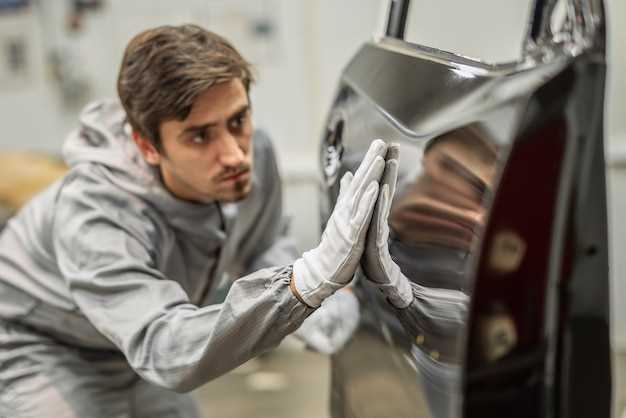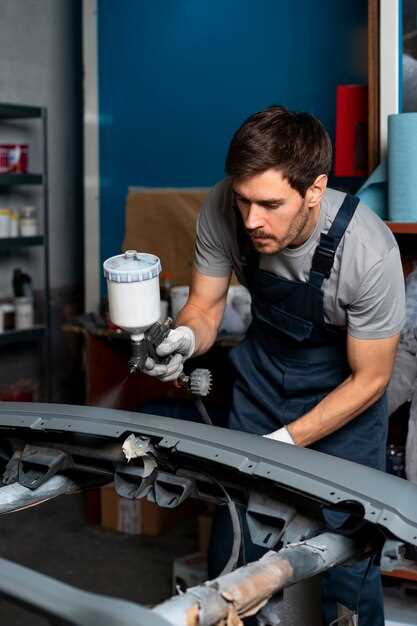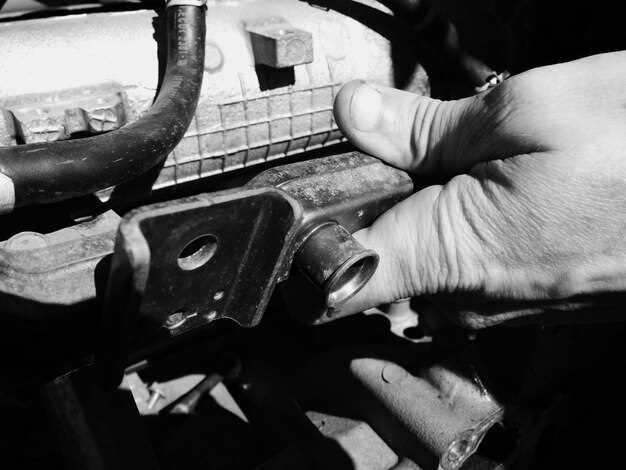
Car restoration projects can be incredibly rewarding, yet they come with a myriad of challenges that can test even the most seasoned enthusiasts. One of the primary hurdles lies in the work required to bring a classic vehicle back to its former glory. This involves not only mechanical repairs but also aesthetic refinishments, making it crucial to pay attention to every detail throughout the process.
Another significant challenge is the selection and application of paint. Achieving the right color finish is not a straightforward task; it requires meticulous planning and execution. Restorers often face difficulties in sourcing authentic paints that match the original hue of the vehicle. A slight mismatch can detract from the overall appearance and authenticity of the restoration.
To ensure a successful outcome, it’s essential for car restorers to have a clear strategy in place that addresses quality control at every stage. Each component needs to not only fit well but also match the original specifications and aesthetic features of the car. This commitment to detail will ultimately define the success of the restoration project.
Achieving Accurate Paint Match for Classic Cars
Matching the original paint color of classic cars is one of the most critical aspects of restoration work. A precise color match ensures the aesthetic integrity of the vehicle and enhances its value. The process of achieving this begins with the identification of the original paint code, which may be located on a color plate or in manufacturer documentation.
Once the correct paint code is obtained, the next step is to prepare and test paint samples. This involves mixing the paint to the specified formula and applying it on a small panel. Testing different paint brands and finishes can help determine which product best replicates the original color and sheen. Special attention should be given to factors like metallic flake size, which can drastically influence the final appearance of the paint.
Environmental conditions such as lighting play a crucial role when assessing the paint match. Observing the color under various lighting situations can reveal discrepancies that are not immediately apparent. This is particularly important when moving from a controlled indoor environment to outdoor settings where natural light significantly affects color perception.
Another challenge is the aging of original paint. Over time, classic car paints can fade and change due to exposure to sunlight, weather elements, and other environmental factors. To compensate for this aging, restoration professionals often blend techniques to create an aged look in the new paintwork. This might involve utilizing techniques like airbrushing or varying the opacity of the paint when applied to the panel.
Finally, achieving an accurate paint match for a classic car is as much about meticulous preparation and execution as it is about the products used. Proper surface preparation, such as sanding and priming, ensures that the new paint adheres well and maintains a uniform finish across all panels. The goal is not only to restore the vehicle but to honor its legacy by preserving its original character through flawless paint work.
Mastering Panel Work: Aligning and Repairing Body Panels
Panel work is a critical aspect of car restoration that requires precision, skill, and a thorough understanding of vehicle construction. Properly aligning and repairing body panels not only enhances the aesthetic appeal of the vehicle but also ensures structural integrity and safety. Here, we outline essential steps and techniques for mastering this vital component of the restoration process.
Understanding Panel Alignment
Alignment of body panels is crucial for achieving a seamless match between adjacent surfaces. Misalignment can lead to gaps, uneven lines, and compromised functionality. To ensure proper alignment:
- Assess existing panel condition before making repairs.
- Use a frame machine if necessary to correct structural issues.
- Check for consistency in gaps between panels.
- Ensure that all mounting points are secure and undamaged.
Repairing Damaged Panels

When repairing body panels, it is essential to adopt methods that preserve the original design while restoring functionality. Follow these steps for effective repair:
- Identify the Damage: Inspect the panel for dents, rust, or cracks.
- Prepare the Surface: Remove paint, contaminants, and rust to create a clean working area.
- Use Appropriate Techniques: Choose between methods such as welding, filling, or using adhesive for repairs.
- Shape the Panel: Utilize tools like hammers and dollies to reshape damaged areas to match the original contours.
- Finish with Precision: Sand and smooth the repaired area before priming and painting.
Ensuring Proper Fit
Once repairs are made, ensuring that all panels fit correctly is paramount. Here are strategies for achieving a precise match:
- Reassemble panels in their intended positions to check for alignment.
- Utilize clamps and braces to hold panels in place during adjustments.
- Conduct a test fit with all components, including doors and hoods, to confirm alignment.
- Make minor tweaks as necessary to achieve an even fit across all panels.
Mastering panel work in car restoration is essential for achieving a professional finish. By focusing on alignment and repair techniques, restorers can enhance both the look and functionality of the vehicle, ensuring an impressive and lasting result.
Navigating the Legalities of Restoring Vintage Vehicles

Restoring vintage vehicles involves various legal considerations that can significantly impact the process. One of the primary challenges is ensuring that the restoration maintains compliance with local regulations. Owners must verify that any modifications, whether they pertain to the engine, exhaust system, or electrical components, adhere to current environmental and safety standards.
Another legal aspect involves the sourcing of parts. When replacing panels or other components, it is crucial to ensure that these items are either original equipment manufacturer (OEM) parts or approved replicas. Using non-compliant components can lead to complications during inspections or when registering the vehicle.
Additionally, paint choices can also pose legal challenges. Many jurisdictions have regulations regarding the types of paint allowed for vehicle finishes, particularly with respect to volatile organic compounds (VOCs). Restorers should familiarize themselves with these statutes to avoid potential fines or penalties.
Insurance implications should not be overlooked, either. Proper documentation of the restoration process, including receipts for parts and labor, can be vital in ensuring adequate coverage for the vintage vehicle. Furthermore, some insurance policies may require specific evaluations or appraisals to accurately assess the vehicle’s value post-restoration.
Finally, the provenance of the vehicle should be established to avoid legal complications related to ownership and title. Ensuring that the vehicle has a clear history can protect the restorer from disputes or claims of theft. Collecting and retaining all paperwork throughout the restoration process is essential for demonstrating compliance and legitimacy.






